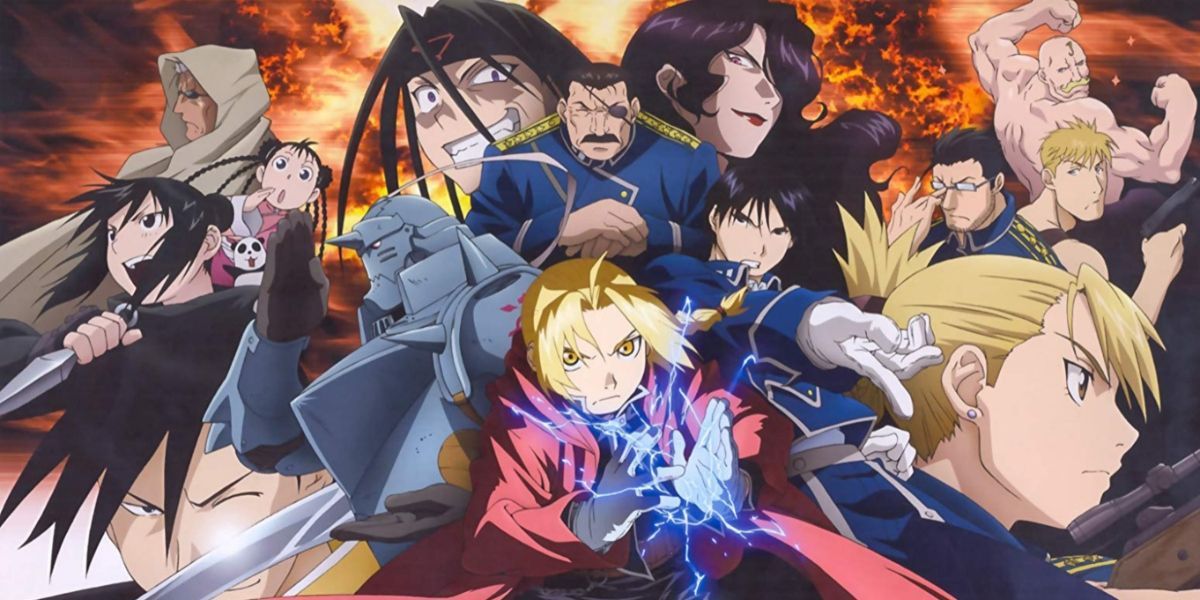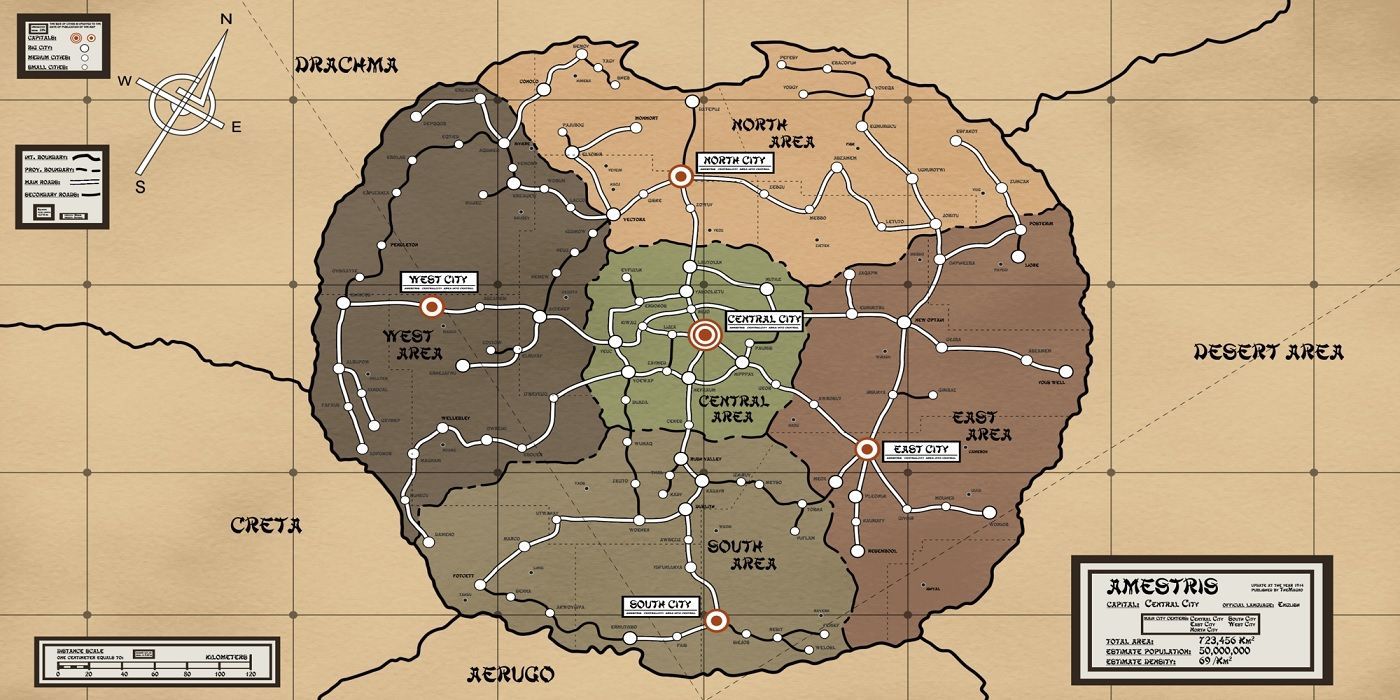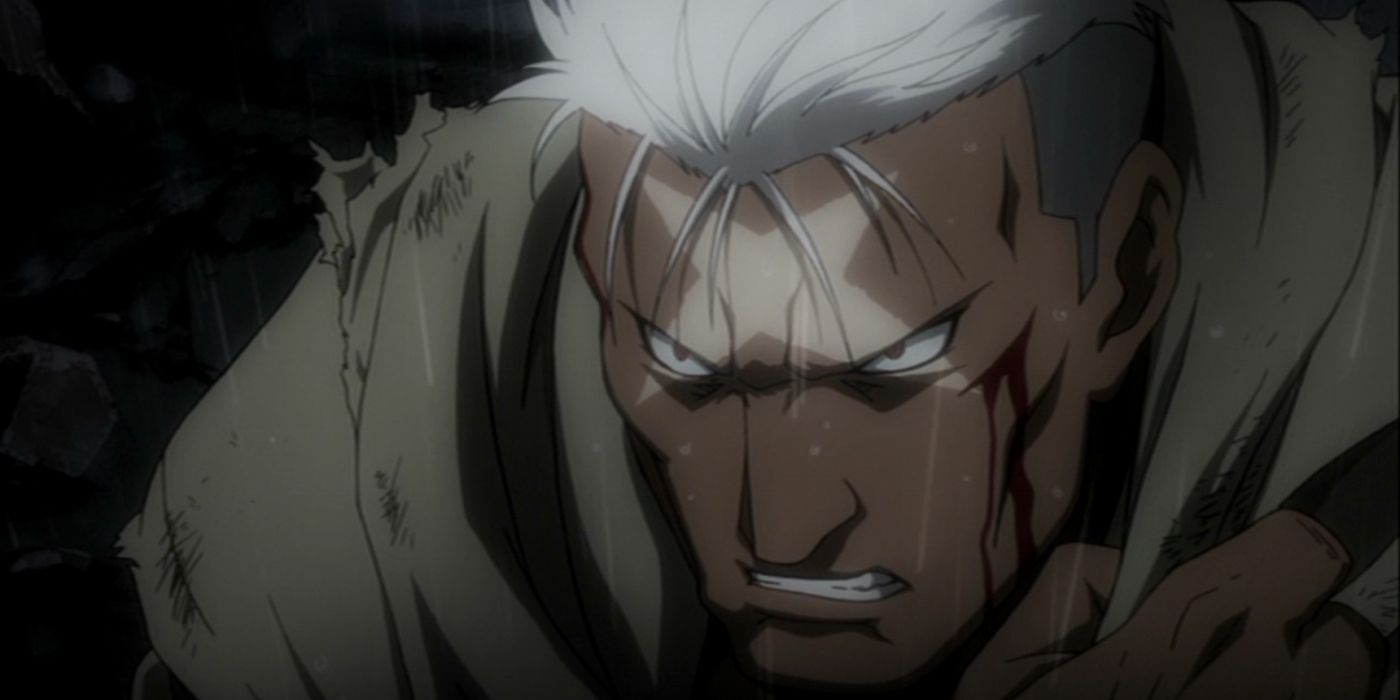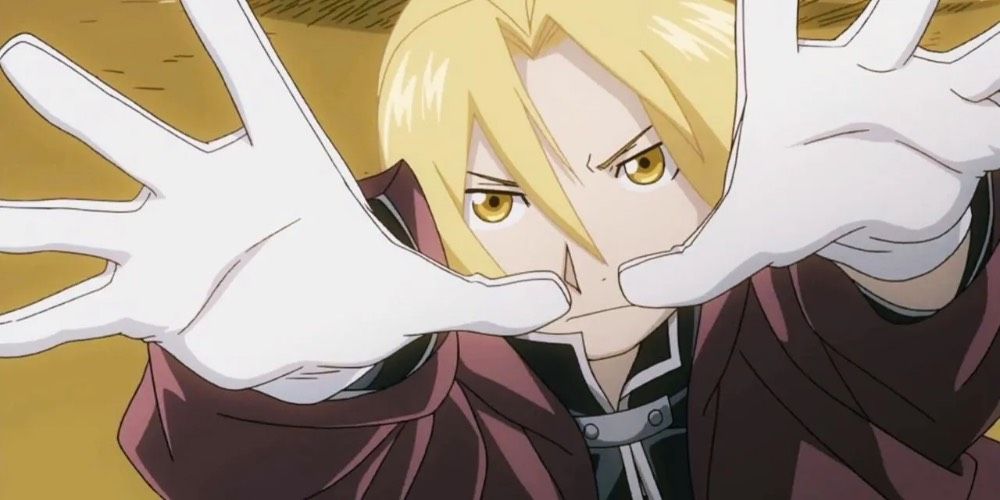Fullmetal Alchemist: Brotherhood is an anime that has enthralled viewers for years. Arguably its biggest asset in this respect is its fleshed out world. Indeed, the world building has helped this anime feel like it could feasibly exist in its own universe. This becomes increasingly apparent when considering its actual geographical world, realistic flawed characters and its famously intricate hard-magic system.
The map of Fullmetal Alchemist: Brotherhood’s world shows a fully fleshed out geographical area, spanning multiple countries. The country in which the story takes place, Amestris, is divided into five areas based on cardinal directions and a centralized area. Within these different areas, there are different cities with different ethnic groups and cultures, lending a realistic element to this world that is very evident in our own. There is also a centralized Amestrian government that has taken full military control of the whole country, which led to the infamous takeover of Ishval in the eastern region.
Outside Amestris, there are many other countries with their own cultures and their own understandings of what alchemy is and how it works. Chiefly mentioned among these foreign countries are Drachma and Xing. These countries are both larger than Amestris and present different worldviews and, in the case of Drachma, the threat of an invading force. The viewer gets the sense that, while the story takes place in Amestris, there is a whole world full of other alchemists and potential threats out there that are looming in the background.
Once we get past the physical world itself, there are many characters worth examining to get a taste of Fullmetal Alchemist's unforgiving world. Three characters in particular really give the show a sense of a genuine world. First off, the main character, Edward Elric. The events of the story are set in motion after he botches an attempt to resurrect his mother, seriously maiming himself and erasing his own brother’s body in the process.
In this world, even children can suffer intense consequences for their actions, lending an unforgiving realism to the world. Then there is Colonel Mustang. He is one of the characters that the viewer is meant to root for throughout the anime, but when being shown what he had done in the past, he seems markedly less heroic. This reflects the real world’s propensity for having its “heroes” not so perfectly black or white, but rather an appropriate gray area. Imperfect heroes have always existed throughout history.
Scar is the final character worth analyzing. He shows what can happen when military tensions cross borders and almost completely annihilate a culture. Ishval was almost completely destroyed, along with its people, and Scar is understandably driven on a revenge quest to take down the Amestrian government. While Scar takes his ideology too far in the events of the anime, his point of view is portrayed as one to be understandable, if not fully morally justifiable. The layers given to his motivation and actions is something that shows how brutally well done and immersive the world building is.
Of course, the last major element of this anime’s masterful world building is its renowned hard-magic system. Hard-magic systems are magic systems that have clear and concrete rules that can not be broken for the magic to function. It leaves little, if anything, to interpretation. In Fullmetal Alchemist's chosen magic system, alchemy, the rules are simple: in order to create something, something of equal value has to be given. This is the concept of equivalent exchange. It is incredibly easy to understand, and the tension does not come from whether the characters will bend the rules, but rather whether they will succeed under the confines of the rules. This calls to mind real world scientific processes like energy transfer, states of matter, etc. The fact that equivalent exchange is never broken in the anime makes the world feel concrete and understandable.
Whole textbooks could be written on the world of Fullmetal Alchemist: Brotherhood, but suffice it to say this anime is nothing short of a masterful execution of world building. From the layered geography, complex characters, understandable magic system and a whole host of other traits, it’s no wonder it has garnered the interest of anime enjoyers for years.




